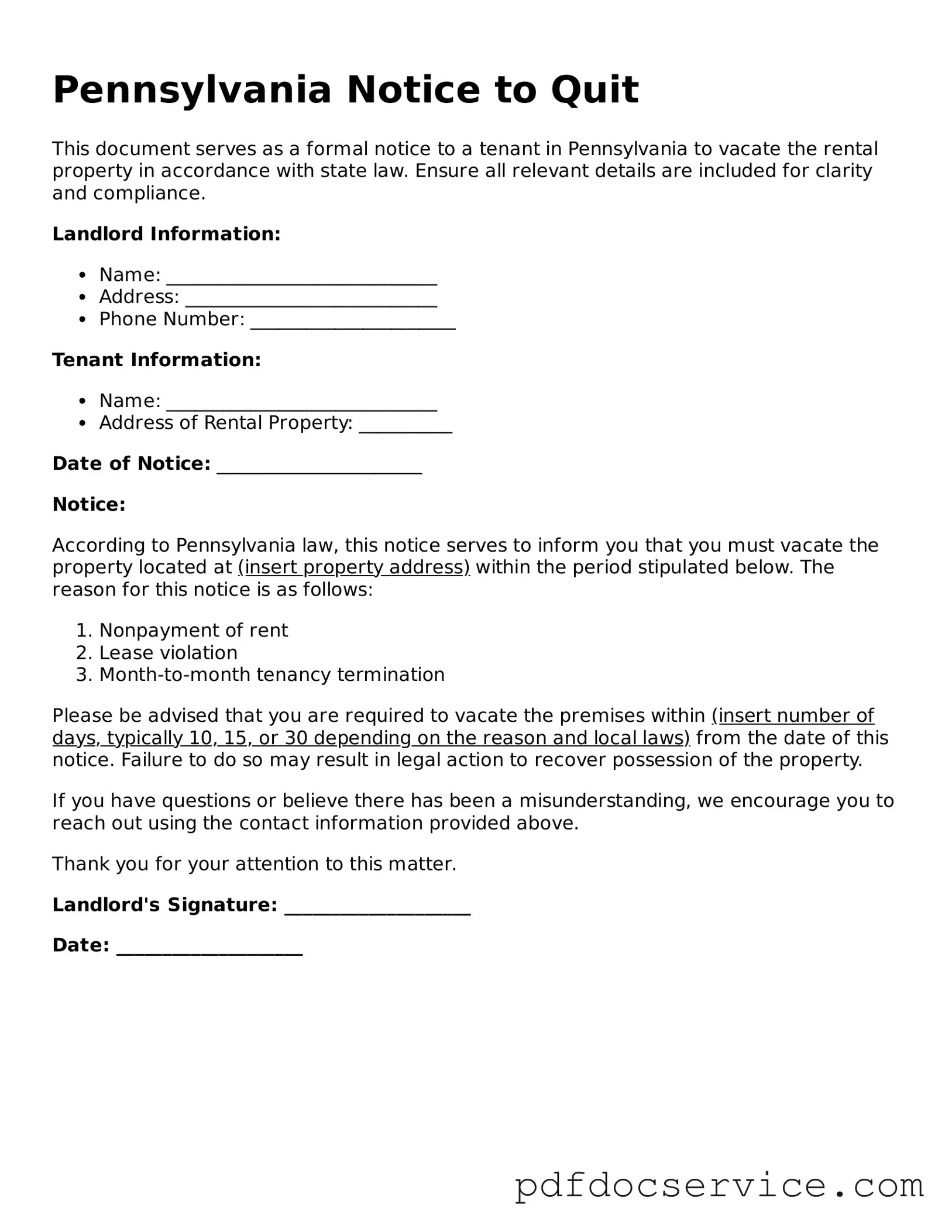The Pennsylvania Notice to Quit form is a legal document used by landlords to inform tenants that they must vacate the rental property. This notice is typically issued when a tenant has violated the terms of their lease or has not paid rent. It serves as a formal request for the tenant to leave the premises within a specified timeframe.
When is a Notice to Quit required?
A Notice to Quit is required in situations such as:
-
Non-payment of rent
-
Violation of lease terms
-
End of lease agreement without renewal
Each situation has different requirements regarding the notice period, which can range from a few days to a month, depending on the reason for the notice.
How long does a tenant have to respond to a Notice to Quit?
The response time depends on the reason for the notice. For non-payment of rent, tenants usually have 10 days to pay the overdue amount or vacate the property. For lease violations, the notice period may vary, often giving tenants 15 days to correct the issue or leave.
What should be included in a Notice to Quit?
A proper Notice to Quit should include the following:
-
The name and address of the tenant.
-
The address of the rental property.
-
A clear statement of the reason for the notice.
-
The date by which the tenant must vacate.
-
The signature of the landlord or their representative.
Ensuring all this information is present helps avoid confusion and potential legal issues.
Can a tenant contest a Notice to Quit?
Yes, tenants can contest a Notice to Quit. If they believe the notice is unjust or that they have remedied the issue cited, they can respond in writing or seek legal advice. It’s essential for tenants to act quickly, as failing to respond may lead to eviction proceedings.
What happens if a tenant does not leave after receiving a Notice to Quit?
If a tenant does not vacate the property by the specified date in the Notice to Quit, the landlord may initiate eviction proceedings. This typically involves filing a complaint in the local court and obtaining a judgment for possession of the property.
Is a Notice to Quit the same as an eviction notice?
No, a Notice to Quit is not the same as an eviction notice. The Notice to Quit is the first step in the eviction process, informing the tenant of the need to vacate. An eviction notice, or court order, is issued after the landlord has taken legal action and received a judgment against the tenant.
